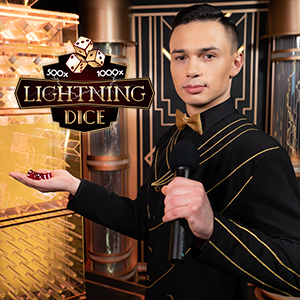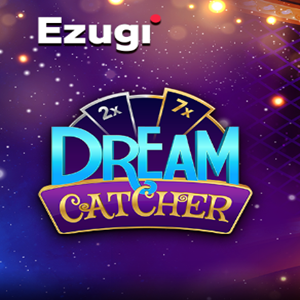The Hi-Lo card counting system is a card-counting method that is used to keep track of the strength of the cards remaining in a card shoe. Specifically, the method assigns values to cards based on how useful they are to the player. The more useful cards are left in the shoe, the better your odds of winning become.
You can then use this information to adjust your strategy. For example, you can increase the stake if the shoe is favourable, thereby increasing your profits. Let’s not get ahead of ourselves, though – let’s start with the basics.
The first thing to know about blackjack card counting is that some cards are more valuable to players than others. Specifically, Aces and cards with a value of 10 (10, J, Q, K, A) are considered better because they result in the strongest hands. Moreover, dealers are more likely to bust with more high-ranking cards in the shoe. You can refer to our blackjack hand value guide for more information.
As such, the goal of the Hi-Lo strategy is to keep track of how many 10-value cards are left in a blackjack shoe. However, paying attention and keeping note of every card that passes through the table can be challenging even for people with a great memory. That’s why a simple system was devised to assign value to cards.
Card Values in Hi-Lo Card Counting
The Hi-Lo strategy starts by assigning values to cards based on whether we want them to be discarded or remain in the shoe.
All cards are assigned one of three values based on their rank. Card suits are generally irrelevant in blackjack, so the Hi-Lo method does not account for them either.
- 2–6 = +1
- 7–9 = 0
- 10–A = -1
We’ll take a second to explain why these values work this way.
As we’ve already mentioned, 10s and Aces are the best cards for you as a player. As such, a shoe that contains more 10-value cards is statistically better than one that doesn’t. As such, whenever a 10-value card or an Ace are drawn from the shoe and discarded, the remaining shoe becomes slightly worse. That’s why any such cards subtract -1 from the current count.
Conversely, low-ranking cards like 2s, 3s, and 4s are considered weak. The fewer of them are still in a shoe, the better things are for you as a player. As such, the count increases by +1 whenever these cards are played and removed from the shoe.
7s, 8s, and 9s stand somewhere in the middle: they’re not particularly strong, but they don’t necessarily make the odds worse for you either. That’s why these cards do not affect the count at all.
The table below shows how every card affects a Hi-Lo count.
Running Count & True Count
Once the values are assigned, you simply need to keep track of which cards are dealt as the game progresses. Instead of tracking every card rank individually, we simply keep a running count of the card values we assigned in the previous step.
Keeping a running count is all about paying attention to which cards are dealt and keeping a “score” of their values. Here’s how that works.
- The count starts at 0 when the dealer shuffles and starts a new card shoe.
- As cards are revealed, add and subtract from it based on the values you assigned.
This is called a “running count”. The higher the running count, the better the remaining cards are for the player because it means there are more “good” cards left in the shoe.
However, we also need to remember a few important things. Most blackjack games these days use more than one deck. Counting cards in blackjack is less informative and less useful if the shoe contains multiple decks. More cards in the shoe mean that you learn less about it as cards are played through.
A true count is essentially a card count that accounts for the number of decks used at the table. It allows you to have a more realistic picture of the remaining shoe and how good it is for you.
To find out your true count, you simply have to divide the running count by the number of decks in the shoe. For example, let’s say you’re playing a relatively new shoe at a table that starts with 6 decks per shoe. If your running count is +6, you need to divide it by 6 to get the “true count”: 1.
Step-by-Step: How to Use the Hi-Lo System
Let’s sum up everything we’ve learned by going through the required steps of H-Lo card counting.
- Step 1: Assign Values to Cards – In the Hi-Lo system, cards ranked 2-6 have a value of +1, cards ranked 10 and up have a value of -1, and other cards have a value of 0.
- Step 2: Keep a Running Count – Add and subtract the assigned values from the count based on which cards are played through.
- Step 3: Calculate the True Count – Divide your Running Count by the approximate number of decks left in the shoe.
- Step 4: Adjust Strategy – Whenever the True Count is high and thus favourable, adjust your playing in two ways:
- Increase the stakes – Whenever the True Count is at +2 or more, increase the stakes. The higher the True Count, the more you should increase the bet.
- Deviate from basic blackjack strategy – A high True Count also means you should make different decisions in specific circumstances.
Example:
Let’s say that the first 10 cards to be dealt during the first round are 4, K, 9, 5, A, 6, 8, 3, 5, and Q. In this case, calculating the running count would look like this:
1 – 1 + 0 +1 – 1 + 1 + 0 + 1 + 1 – 1= 2
This gives us a running count of 2. However, let’s say that the table uses 6 decks per shoe. This means that the True Count is actually 1/3.
As such, we’ll continue counting until we get a bigger advantage.
For example, after more cards are played, we reach a running count of +10. However, at this point, one deck is essentially removed from the shoe. This means that only 5 decks are still in play, so need to divide our Running Count by 5 instead of 6
This means that our current True Count is +2. This is generally considered a strong position, which is why we’ll increase the stakes.
Practicing the Hi-Lo Count
Learning how Hi-Low works in blackjack is one thing. Actually using it at a live blackjack table is an entirely different challenge.
First of all, keeping a correct true count going can be more difficult than it seems. You have to keep in mind that there will probably be multiple people at the table. This means more cards to track and more variables to consider. Additionally, skilled dealers handle cards with a lot of speed and grace, too, giving you less time to count them. On top of that, you have to think about how the count affects your strategy and adjust accordingly, and you have to do it all on the spot.
The most effective method to ensure that you can consistently maintain a True Count and modify your bets is through diligent practice.
A good Hi-Lo card counting practice uses multiple drills to help you become more proficient. With enough practice, keeping a Tru Count will become second nature, letting you focus on other parts of your strategy. Here are some card-counting drills to help you get started:
- Flashcard apps – These drills help you practice keeping a running count by simulating a game, and then testing whether you’re correctly counting. The Counting Training Drill app is simple and free, so you can start there.
- Counting through a shuffled deck – Simply run through a deck of cards while counting them based on Hi-Lo values. Eventually, you’ll start to see cards as 1s, 0s, and -1s. As you get better, you can increase the number of decks and practice maintaining a True Count as well.
- Simulated games and tables – Set up your own blackjack game where you’ll be acting as both the dealer and all the players. The idea here is to practice your ability to quickly count cards separated into different hands in a realistic scenario. Focus on maintaining a True Count instead of playing “correctly.”
- Back Counting – Back-counting simply means counting cards at a blackjack table without actually playing on it – you just stand behind other players and pay attention. It can be a way to practice counting with no risk.
Hi-Lo vs. Other Card Counting Systems
The Hi-Lo system is likely the most popular method for counting cards in blackjack, but it’s not the only one.
Two other common examples include the KO system and the Omega II system.
- The K-O system is a method that attempts to make card counting easier by removing the need for a true count. Instead, you simply maintain a running count. Unlike Hi-Lo, this system also considers 7s to be a +1 instead of 0. This system is great for beginners, but it sacrifices a lot of accuracy due to its lack of a true count. As a result, you may end up with a less clear picture of how advantageous the current shoe really is.
- The Omega II system aims for a more accurate count by introducing additional potential values. Specifically, 4s, 5s, and 6s have a value of +2. 9s have a value of -1 while 10-value cards all have -2. Everything else about the count is identical to Hi-Lo. Omega II is thus considerably more complex than Hi-Lo, but the increased precision can result in better outcomes. This system was created by Bryce Carlson in his book Blackjack for Blood.
The table below shows a summary of how the Hi-Lo system compares to other card-counting systems.
| System |
Difficulty |
Accuracy |
True Count? |
| Hi-Lo |
Low (Medium in multi-deck games) |
Medium |
Yes |
| K-O |
Low |
Low |
No |
| Omega II |
High |
High |
Yes |









































 Roulette
Roulette
 Blackjack
Blackjack
 Baccarat
Baccarat
 Poker
Poker
 Sic Bo
Sic Bo
 Dragon Tiger
Dragon Tiger
 Game Shows
Game Shows  Top 5 Games
Top 5 Games  See more
See more  Roulette Casinos
Roulette Casinos  Low Limit
Low Limit  High Limit / VIP
High Limit / VIP  Exclusive
Exclusive  How to Play
How to Play  Basic Strategy
Basic Strategy  Top Tips
Top Tips  FAQ
FAQ  Blackjack Casinos
Blackjack Casinos  Baccarat Casinos
Baccarat Casinos  Bonuses
Bonuses  Poker Casinos
Poker Casinos  Game Providers
Game Providers  Sic Bo Casinos
Sic Bo Casinos  Dragon Tiger Casinos
Dragon Tiger Casinos  Credit and Debit Card
Credit and Debit Card  e-Wallet
e-Wallet  Cryptocurrency
Cryptocurrency  Bank and Checks
Bank and Checks  Pay by Phone and SMS
Pay by Phone and SMS  See more
See more  How-To Guides
How-To Guides  Top Lists
Top Lists  In-Depth
In-Depth  Strategy
Strategy  Casino & Games
Casino & Games  Insight
Insight  News
News  Promotions
Promotions 
 Guide to Live Casinos
Guide to Live Casinos  Top 10 Live Casino Tips
Top 10 Live Casino Tips  Studio Locations
Studio Locations  FAQ & Help
FAQ & Help  Meet The Dealers
Meet The Dealers  Our Awards
Our Awards  How We Rate
How We Rate  Responsible Gambling
Responsible Gambling 




























 ENG
ENG 






 Facebook
Facebook
 Pinterest
Pinterest
 Twitter
Twitter
 LinkedIn
LinkedIn
 Copy Link
Copy Link 


























